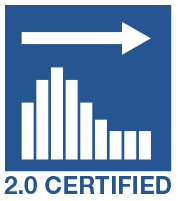Autobox
Autobox is AFS's flagship product, providing cutting edge forecasting for the PC desktop for 33 years. Autobox provides a start to finish environment designed to make forecasting easy whether you have one series or one thousand.
Features
Autobox has a complete set of forecasting features that will appeal to both novice and expert forecasters. Autobox's automatic features are unparalleled in breadth and depth of implementation. Autobox is truly the power forecasters dream tool with a palette of tools that allows the forecaster to build models that work. Read on for a summary of Autobox's features.
General Modeling Environment
Autobox is a program with an easy to use design built around its powerful forecast engine. You can specify your own model or run in a batch environment.
Optional Automatic Modeling
AFS was the first company to automate the BJ model building process. Our approach is to program the model identification, estimation and diagnostic feedback loop as originally described by Box and Jenkins. This is implemented for both ARIMA (univariate) modeling and Transfer Function (multivariate or regression) modeling.
What this means is that the user, from novice to expert, can feed Autobox any number of series and the programs powerful modeling heuristic can do the work for you. This option is implemented in a such that it can be turned on at any stage of the modeling process. There is complete control over the statistical sensitivities for the inclusion/exclusion of model parameters and structures. These features allow the user complete control over the modeling process. The user can let Autobox do as much or as little of the model building process as you or the complexity of the problem dictates.
Complete set of Box-Jenkins modeling Tools
Autobox comes with a complete set of identification and modeling tools for use in the Box-Jenkins framework. This means that you have the ability to transform or prewhiten the chosen series for identification purposes. Autobox handles both ARIMA (univariate) modeling and Transfer Function (multivariate) modeling allowing for the inclusion of interventions (see below for more information). Tests for interventions, need for transformations, need to add or delete model parameters are all available.
Autocorrelation (both traditional and robust), partial autocorrelation and cross-correlation functions and their respective tests of significance are calculated as needed. Model fit statistics, including R², SSE, variance of errors, adjusted variance of errors all reported. Information criteria statistics for alternate model identification approaches are provided.
Intervention Detection
One of the most powerful features of Autobox is the inclusion of Automatic Intervention detection capabilities in both ARIMA and Transfer Function models. Almost all forecasting packages allow for interventions to be included in a regression model. What these packages don't tell you is how sensitive all forecasting methodologies are to the impact of interventions or missing variables. These packages don't tell you if your series may be influenced by missing variables or changes that are outside the current model.
If a data series is impacted by changes in the underlying process at discrete points in time both ARIMA models and Transfer Function models will produce poor results. For example a competitors price change changes the level of demand for your product. Without a variable to account for this change you forecast model will perform poorly. Autobox implements ground breaking techniques which quickly and accurately identify potential interventions (level shifts, season pulses, single point outliers and changes in the variance of the series). These variables can then be included in your model at your discretion. The result is more robust models and greater forecast accuracy.
Graphical Analysis Tools
Autobox has a set of graphing tools that help present complex statistical information in a way that is easy and clear at every stage of the forecasting process. For example graphs of autocorrelation, partial-autocorrelation and cross correlation functions are all available. Even more incredibly these can be compared to theoretical values for various models forms. Plotting of any combination of variables, included fit versus actual and forecasts with confidence limits is simply a few mouse clicks away. Standardization of the variables is always an option before plotting.
Forecasting and Diagnostics
All forecast packages allow for you to produce forecasts using the models you have constructed. Autobox presents the critical information you need to determine of those forecasts are acceptable. Autobox has options that allow you to analyze the stability and forecasting ability of your forecast model. This is achieved through a series of ex-post forecast analyses.
You can automatically withhold any number of observations, re estimate the model form and forecast. Observations are then added back one at a time and the model is re estimated and re forecast. Forecast accuracy statistics, including Mean Absolute Percent Error (MAPE) and Bias, are calculated at each forecast end point. Thus the stability of the model and its ability to forecast from various end points can be analyzed.
Finally, you can optionally allow Autobox to actually re-identify the model form at each level of withheld data to see if the model form is unduly influenced by recent observations.






